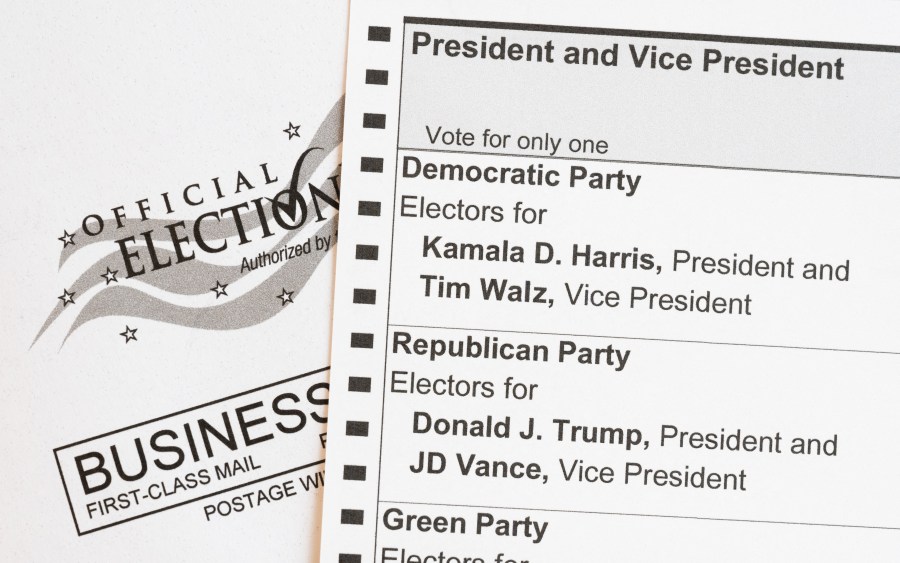(NewsNation) — About 244 million U.S. residents are eligible to vote, but if turnout is anything in November like it was four years ago, about 162 million ballots will be cast across the country.
Voters have three options to cast ballots early in the race for the White House between former President Donald Trump and Vice President Kamala Harris.
While elections have historically centered around people traveling to their closest polling location to physically fill out their ballot, early in-person, absentee and mail-in voting have become popular alternatives to waiting until the first Tuesday in November to vote.
Are ballot selfies illegal?
Ahead of what has remained a hotly contested election between Trump and Harris over the past three months, here’s what voters should know about the available options before Election Day.
Early voting
The majority of U.S. states allow voters to vote in person ahead of November 5. According to The Center For Election Innovation & Research, almost 97% of voting-age residents live in a state where early voting is permitted. According to the organization, the number of Americans who voted early grew between 2016 and 2020 as states began to offer more options.
Every state allows its residents to vote early by mail and all but three (Alabama, Mississippi, and New Hampshire) permit voters to cast their ballots before election day in person.
The COVID-19 pandemic in 2020 dramatically increased the number of those who elected to vote early. The New York Times reported that more than 100 million people voted early in 2020 due to concerns about the spread of the virus by visiting polling places.
Harris outreach to Black men: New policy, interviews, meetings
Since then, early voting has picked up momentum, including most recently in North Carolina, where residents affected by Hurricane Helene have been able to cast ballots early beginning this week as they attempt to recover from the deadly storm.
U.S. election officials say that in most cases, voters do not need an excuse to vote early. While each state has its own rules for when early voting begins and ends and other guidelines for casting an early ballot, each state uses different terminology to discuss the practice. The National Conference of State Legislatures categorizes states that allow early voting as being places where the practice is open to everyone.
However, the organization differentiates between early voting, which resembles the practice of what happens on Election Day, and absentee voting, which occurs when a voter fills out and signs an absentee ballot at a polling place after requesting to vote in this manner.
Absentee voting
This form of voting dates back to the Civil War, when soldiers were physically unable to return to their homes to cast their ballots at their assigned voting precincts.
While absentee and mail-in voting were often considered to be the same thing, election officials across the country have always differentiated between the two, according to the Washington Post. Absentee voting expanded beyond soldiers to Americans living with disabilities who had difficulty making it to their polling location to vote.
Before long, anyone who would not be in their assigned voting district on the day of the election was permitted to request an absentee ballot, which could be cast without an excuse of why it was needed. As of 2023, 28 states along with the District of Columbia allow no-excuse absentee voting.
In eight states (California, Colorado, Hawaii, Nevada, Oregon, Utah, Vermont, and Washington) elections are conducted entirely by mail, and ballots are mailed automatically,
However, the National Conference of State Legislatures states that the remaining states still require a voter wishing to cast an absentee ballot to provide a reason for why they choose to vote in this way.
As in the case of early voting, rules for when absentee ballots must be received or postmarked vary by state. In some states, early voting is called absentee voting or mail-in voting because regardless of why the voter is not casting a ballot in person, they are voting by mail.
Mail-in voting
Unlike absentee ballots, which must be specifically requested by a voter, mail-in voting has become universally accepted by states across the country.
In several places, ballots are sent automatically to registered voters, providing the option for ballots to be returned by mail or to a designated drop-box rather than voting taking place in person.
Ballots are mailed out long before Election Day and voters are provided with specific instructions about how the ballot should be returned to be counted. The mailing envelope in which the ballot is returned includes an affidavit which is required to be signed by the voter. Mail-in voting has become a more viable option for many residents, especially since the COVID-19 pandemic.
What is ranked choice voting and how do I do it?
However, some candidates for public offices, including Trump, have claimed that mail-in ballots have led to rigged elections, including in 2020, when he made unsubstantiated claims that the race against President Joe Biden was stolen from him. In campaign events leading up to next month’s election against Harris, Trump and others have continued to call for elections to be protected.
“The elections are so screwed up. We have to get back in and we have to change it all,” Trump said during a campaign rally in August in Johnstown, Pennsylvania, according to ABC News. “We want to go to paper ballots. We want to go to same-day voting. We want to go to citizenship papers. And we want to go to voter ID. It’s very simple. We want to get rid of mail-in voting.”
However, according to the Center For Election Innovation & Research, voting by mail is not only secure but has been an integral way of keeping elections secure and accessible.
